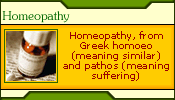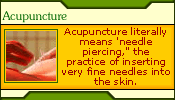|
The following disfunctions respond to clinical massage.
Myofascial Pain and Disfunction
Pain and/or physiological disfunction originates from identifiable
points within muscles and their fascial tissues. These locations
are known as trigger points because they often trigger distant reactions.
Scientists have developed extensive maps of such referred pain.
They have also identified nearly a hundred disfunctions that can
have myofascial trigger point origins. Some of these are: carpal
tunnel syndrome, TMJ disfunction, PMS, headache, diarrhea, dizziness,
cardiac arrhythmia, indigestion, tennis elbow, urinary frequency,
sinusitis, deafness, and blurred vision.
Fascial Plane Disfunction
Fascia can be compared to the body's own version of "Saran
Wrap." It covers most of the body in large, continuously connected
sheets. Injury, postural patterns and chemical imbalances can cause
these sheets to distort and bind to themselves and nearby tissues.
Since all major blood vessels and nerves follow these fascial sheathes
through the body, properly aligned and released fascia is vital
to good health and the proper operation of the circulatory and nervous
systems.
Neuromuscular Disfunction
The smallest muscular activity requires that countless nerve impulses
be sent to the muscle to be activated and to all of the adjoining
and opposing muscles. For example, let us say that you want to flex
your elbow. This requires that you must tighten the biceps and other
associated muscles while simultaneously relaxing the triceps and
other associated muscles. The combined nervous activity and muscular
response must be precisely timed and exactly proportionate.
For more complex movements like rotating the head or taking a breath,
the amount of coordinating activity increases exponentially. Unfortunately,
the mechanism responsible for such coordination can break down and
muscle fibers or whole muscles can actually lock in opposition to
their normal activity.
Tonus System Disfunction
When overused, muscles can lose their ability to understand how
to relax. This is referred to as hypertonic. As a result, the muscles
become overly tight. They tend to harbor myofascial trigger points,
and cause stress on the muscles that oppose them and the joints
that they cross.
Dermatomic and Spondylogenic Disfunctions
If a nerve is pinched where it leaves the spine, or anywhere along
its route, the area that nerve serves will feel pain. Many people
have experienced such a problem with the sciatic nerve. It originates
in the low back, but when pinched can make the knee, shin, or heel
hurt. This is an example of dermatomic pain - literally translated
- pain in an area of skin.
Spondylogenic Disfunction
This occurs when the joints of the spine are compressed or otherwise
impaired and cause their own special trigger point-type pain or
disfunction.
Both of these are successfully treated with clinical massage by
loosening the muscles and other soft tissue that surrounds the affected
joint or nerve.
|













